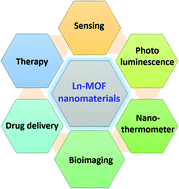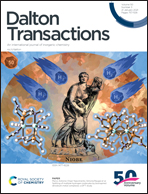Highlights of the development and application of luminescent lanthanide based coordination polymers, MOFs and functional nanomaterials
Abstract
The development of lanthanide based coordination polymer and metal–organic framework (CPs and MOFs) nanomaterials as novel functional (e.g. luminescent and magnetic) materials has attracted significant attention in recent times. This is in part due to the wide, but yet unique coordination requirements that the f-metal ions possess, as well as their attractive physical properties, which are often transferred to the bulk material. Hence, there is no surprise, that the design, synthesis and characterisation of lanthanide based CP/MOF materials (featuring either ‘pure’ lanthanides, or a mixture of both f- and d-metal ions) for applications in gas and small molecule absorption, storage, conversion/catalysis, chemical sensing, bio-imaging, drug delivery, etc. has been a prominent feature in the scientific literature. In this review, we give a selected overview of some of the recent developments in the area of Ln CP/MOF based nanomaterials for sensing, optical materials and bio-medicine research, as well as making reference to some more established examples, with the view of introducing, particularly to new researchers to the field, the powerful and attractive features of lanthanide based materials.

- This article is part of the themed collections: Dalton Transactions up-and-coming articles and 2020 Frontier and Perspective articles


 Please wait while we load your content...
Please wait while we load your content...